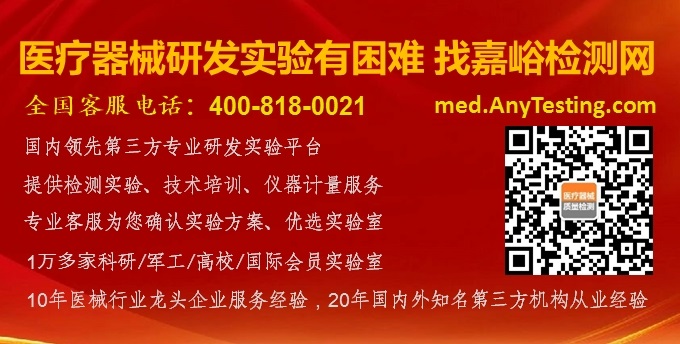The complexity of medical devices has increased over the past 10 years, and outbreaks of infections due to contaminated devices have focused attention on the need to adequately clean medical devices in order to ensure the adequacy of disinfection and sterilization. There has been a paradigm shift in reprocessing of medical devices, with increased emphasis on a quality management systems approach that requires validated cleaning instructions from manufacturers and ongoing monitoring by reprocessing personnel to ensure adequacy of cleaning.
过去10年中医疗器械复杂程度显著提升,同时也导致了器械污染导致的感染事件的增加。人们开始意识到有必要对医疗器械进行充分清洁,以确保充分的消毒和灭菌。医疗器械回收过程越来越强调质量管理体系方法,要求制造商提供经过验证的清洁指示,并进行持续监测,以确保清洗的充分性。
Reusable medical devices are designed to be used repeatedly on patients,and the manufacturer’s instructions for use (MIFU) must include specific, validated instructions for cleaning as well as for disinfection and/or sterilization. If medical devices are not properly reprocessed, there is a risk that they will be contaminated with microorganisms that could be transmitted to multiple patients, causing colonization or infections.
复用医疗器械是指设计为在不同病人之间重复使用的医疗器械,而在重复使用前必须经过恰当的去污等处理流程。制造商的使用说明(MIFU)必须包括具体的、经验证的清洗、消毒和/或灭菌方法。若处理不当,易造成感染。
As awareness of infection transmission through contaminated medical devices increases, it is becoming increasingly apparent that a quality management systems (QMS) approach is needed, regardless of the type of medical device being processed. A QMS approach has been defined as “a formalized system that documents processes, procedures, and responsibilities for achieving quality policies and objectives. A QMS helps coordinate and direct an organization;s activities to meet customer and regulatory requirements and improve its effectiveness and efficiency on a continuous basis.” The quality monitoring processes for sterilization technologies are well established; however, for highlevel disinfectant (HLD) processes, only recently have quality monitoring processes been introduced that go beyond just checking reusable HLDs to ensure a minimal effective concentration. Despite this progress, there has been little in the way of establishing quality monitoring of manual or automated cleaning efficacy for any type of reusable medical device, despite the recognition that disinfection and sterilization processes will fail if the cleaning has not been performed adequately.
随着人们越来越意识到污染医疗器械造成的感染,质量管理体系(QMS)的必要性也越来越明显。质量管理体系是指:为实现质量方针和目标而记录过程、程序和责任的一种形式化的系统。质量管理体系有助于协调和指导组织的活动,以满足客户和法规的要求,并持续改进其有效性和效率。灭菌过程的质量监测已经建立,但高水平消毒引入质量监测的时间较短,仅保证连续使用过程中其有效浓度不低于最低有效浓度。尽管人们已经认识到了如果清洁工作不充分可能导致消毒和灭菌的失败,但复用医疗器械的手工或自动清洗效果质量监测仍然很少。
The microbial load on patient-used surgical instruments is relatively low. The microbial levels varied depending on the type of surgery, with cesarean section surgery showing the highest CFU/cm2.Significantly fewer organisms were detected from clean-contaminated vs contaminated surgeries (average of 41±84 CFU/device vs 201±126 CFU/device), and infected surgical procedures were found to have the highest level of contamination. The most common microbes detected from surgical instruments used for clean orthopedic surgery were coagulase-negative staphylococci, Staphylococcus aureus, and Bacillus spp. Detection of Gram-negative bacteria increased in clean-contaminated and infected orthopedic surgery, but the predominant isolates were still Staphylococcus and Bacillus spp., a finding similar to data from other published studies. Although surgical instruments typically have low microbial levels, the level of organic residuals is high, and inadequate removal of patient secretions, tissue, and bone, for example, may result in failure of the sterilization process. These findings emphasize the importance of the cleaning process to ensuring adequate sterilization.
使用后的器械上微生物负荷相对不高,且与外科手术类型有关。剖腹手术器械上的CFU数值最高(CFU/cm2)。清洁-污染手术器械上检测到的有机物显著少于污染手术,感染手术器械的污染程度最高。清洁骨科手术器械上最常见的微生物是凝固酶阴性葡萄球菌,清洁-污染手术和感染手术器械上革兰氏阴性细菌较多,但主要还是葡萄球菌和芽孢杆菌。尽管手术器械的微生物含量通常很低,但有机残留物的含量却很高,而且对患者分泌物、组织和骨骼等的去除不充分可能导致灭菌过程失败。这些发现强调了清洗过程对确保充分灭菌的重要性。
Medical devices are cleaned manually as well as by automated washers. The current ANSI/AAMI ST79 guideline supports the efficacy of automated washer-disinfectors (WDs) for reprocessing the majority of surgical instruments (often with sonication before cleaning in the WD). The automation of cleaning ensures that the process will be reproducibly performed and done more efficiently than manual cleaning, and the WD provides thermal decontamination of instruments which reduces the infection risk to reprocessing personnel who then handle the instruments for packaging and sterilization.
医疗器械通常用手洗或者机洗处理。ANSI/AAMI ST79肯定了自动清洗消毒机对大多数手术器械再处理的有效性(通常在机洗前进行超声处理)。洗消机的运用提高了器械处理效率,同时,对器械进行热消毒,减少了操作人员的感染风险。
The adequacy of cleaning of medical devices can be evaluated by monitoring the WD when automated methods are used or by monitoring the cleaned device itself. Current guidelines recommend that monitoring the cleaning efficacy in WDs should be performed at least weekly, preferably daily. A wide range of commercial cleaning monitoring tests are available for WDs, but it is difficult to compare the efficacy of one WD cleaning monitor to another as there are no current standardized criteria for such tests; for example, what level of defect in detergent concentration, temperature, water quality, or spray-arm water impingement pressure will cause the cleaning monitor to fail? More research is needed to establish standardized criteria for WD cleaning monitors so guidelines can be developed. Despite this limitation, the use of such cleaning monitors does ensure that there is regular monitoring of WD cleaning efficacy within the constraints of the cleaning monitor used.
机洗时的清洗质量可以通过监测洗消机参数或者检测处理后的器械来评估。目前的指南建议,应至少每周进行清洗效果的监测,最好是每天。对于单台自动洗消机的检测方式较多,但目前缺乏标准化的测试来比较不同洗消机之间的差异,如:清洗剂浓度、温度、水质或旋转喷淋臂水冲击压力等方面什么程度的缺陷会导致清洗监测呈现不合格?需要更多的研究来建立清洗监测标准,以便制定指导方针。
Rapid cleaning monitoring tests can detect organic residuals such as TOC, protein, hemoglobin, and carbohydrate on the surface of surgical instruments. The ninhydrin test for protein has been evaluated for monitoring surgical instruments; however, this test does not detect all proteins and there are many false negative results, so it has not been widely implemented. Recently, ATP testing has been used to demonstrate that the cleaning of ultrasound probes requires improvement. Although rapid ATP tests have been used to assess cleaning adequacy for surgical instruments and ultrasound probes, more clinical studies are needed to establish the cut-off level of ATP (often measured as relative light units [RLUs]) for each test kit that reliably indicates that adequate cleaning has been achieved.
快速清洗监测可以检测到手术器械表面的有机残留物,如TOC、蛋白质、血红蛋白和碳水化合物。茚三酮蛋白检测已被用于监测手术器械;然而,这种检测并不能检测到所有的蛋白质,并且存在很多假阴性的结果,因此还没有得到广泛的应用。最近,ATP检测在清洗监测的应用较多,但同样需要更可靠的数据支撑。
文章翻译自 Alfa M . Medical instrument reprocessing: current issues with cleaning and cleaning monitoring.[J]. American journal of infection control, 2019, 47S:A10-A16.




